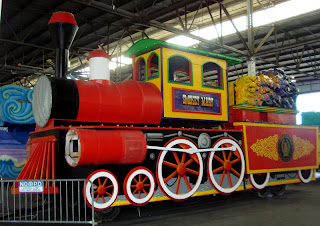What is it about New Orleans—especially the French Quarter? I returned Friday night from my second visit to NOLA, this time as part of Laure Ferlita’s Imaginary Trips Made Real painting holiday, and I’m more enchanted than ever. The city continues to reveal new aspects of itself, tantalizing me with glimpses of seductive alleyways, the old and the new living side by side, snatches of music on the air, and delicious food aromas (and flavors). Despite sampling nearly every New Orleans culinary specialty, I managed to avoid gaining weight—probably because we walked nearly everywhere, racking up an average of more than 10,000 steps per day (or 87,330 steps according to my rough estimate). Just for kicks, I brought my pedometer with me and wore it every day to see how much ground we covered. (Our high: 18,877!)
Eight artists, including me, joined Laure for the trip. Though we’d never met in person, I “knew” several of the women through blogging. The camaraderie of the whole group was magical, a term I heard several people use about this experience. Laure had lined up a number of tours with opportunity for sketching afterwards, and made reservations, when possible, at some of NOLA’s iconic restaurants. I’ll write more about the trip in future posts, but to start with, I’ll share our first destination, Blaine Kern’s Mardi Gras World.
The artists at Mardi Gras World work on props and floats for Mardi Gras parades year round, beginning the day after Mardi Gras. Mardi Gras is the last day of Carnival, which begins on the Feast of Epiphany Jan. 6 and ends on the Tuesday before Ash Wednesday. Mardi Gras parades can take place any time during Carnival. Mardi Gras World produces about 600 floats per year, for about 40 of the 54 parades thrown by the New Orleans krewes each year. Each krewe chooses a different theme for its parade every year, so the only float that stays the same is the krewe’s signature float. Below are pictures of parts of the signature float of Harry Connick Jr.’s krewe, Orpheus:
 |
| "Smokey Mary" |
 |
| Diagram of float |
If you ever find yourself in New Orleans (and I sincerely hope you do), the trip to Mardi Gras World is worth your time. Even if you don’t pull out a sketchbook.
Mardi Gras World was just the beginning of our adventures. We ate lunch at Antoine’s the second oldest restaurant in the French Quarter (opened in 1840). Antoine himself invented dishes such as Chicken Creole, Crayfish Etoufee and Shrimp Remoulade. His son Jules created, among other things, Oysters Rockefeller. We spent the afternoon taking a walking tour of the French Quarter with a guide from the Friends of the Cabildo and later walked to dinner at Mother’s.
And that was just Day 1.














.jpg)


